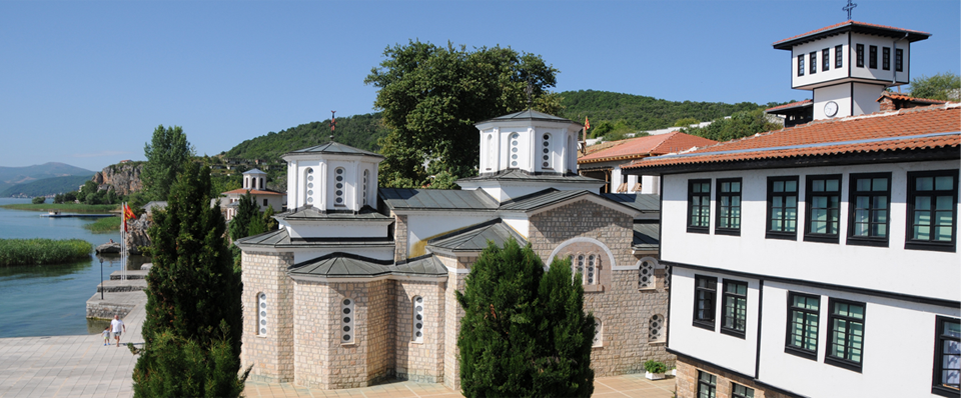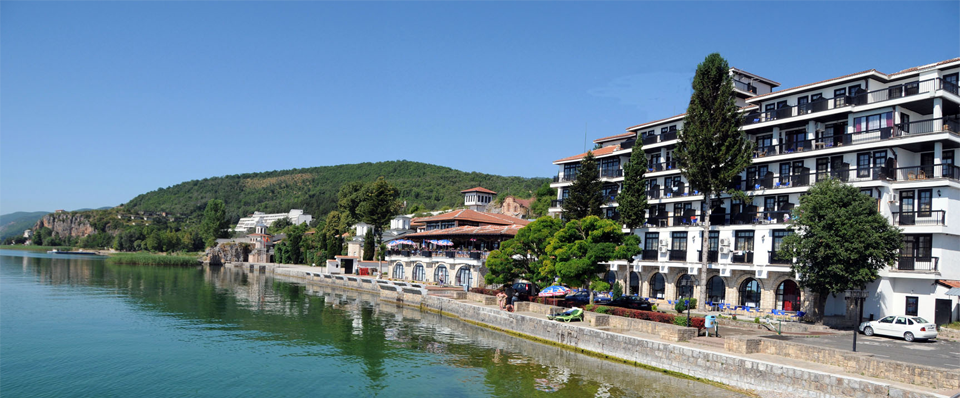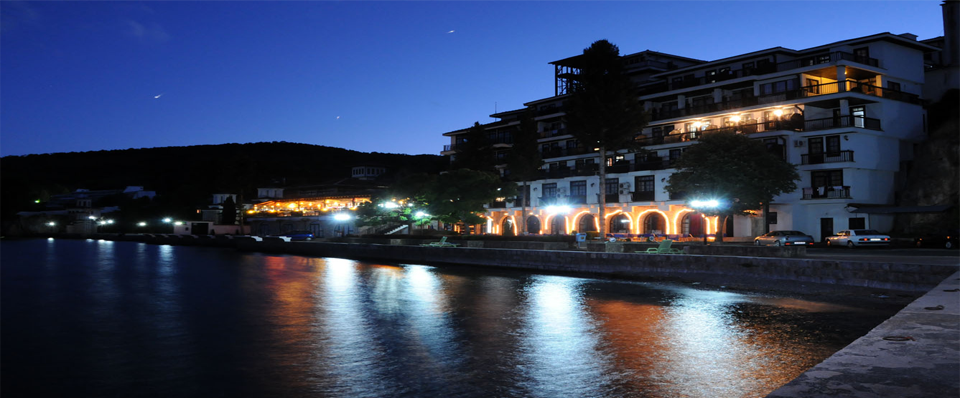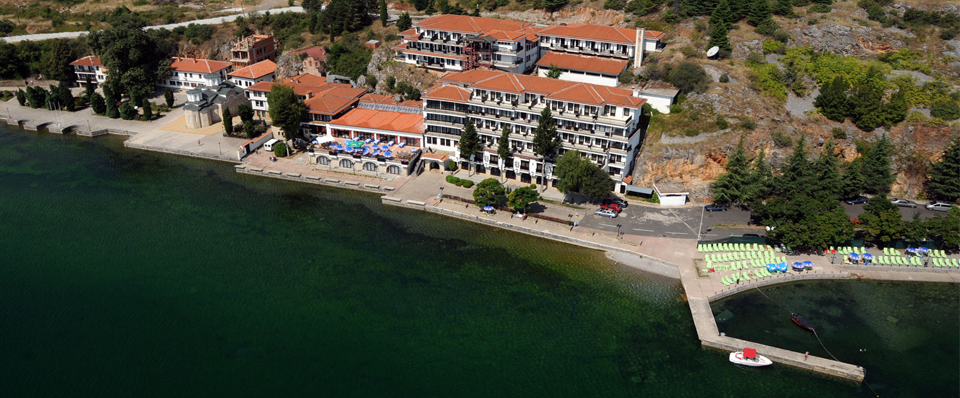![]()
Churches
There is a legend supported by observations by Ottoman traveler from 15th century, Evlia Celebia that there were 365 chapels within the town boundaries, one for every day of the year. Today this number is significantly smaller. However during the medieval times, Ohrid was called Slavic Jerusalem.
• Church of St. Sophia
• Church of St. Panteleimon
• Church of St. John at Kaneo
• Church of St. Clement
• Church of St. George
• Church of St. Zaum
• Church of St. Naum
• Church of St. Petka
• Church of St. Stefan
From the time when the Macedonian kings were ruling, there are basilicas in the villages of Radolista, of Oktisi and of Delogozhda, dating from the early Christian period, 5th-6th century AD. It is clear that by the 6th century AD, in Struga and its surrounding an intensive life has developed. This can be proved by different objects dating from this period and their excellent treatment, also from gorgeous tomb inscriptions, with pure art design, and above all, these were people who knew how in the utilitarian to try to find elements of real art.For the cultural history of Struga and its surrounding the above mentioned early Christian basilicas in the village of Oktisi and in the village of Radolista are of great importance.
They are three nave, with naos, narthex and baptistery, and what makes them gorgeous, are floor mosaics.Basilicas of this type are spread over the whole Balkan. Some of them are important by their architectural decisions, and others because of the mosaics and the different decorations. But not so often basilicas with floor mosaics that represent very rear compositions are found: in Oktisi basilica in its narthex there is a composition representing the entrance in heaven, and in the basilica in Radolista, in the naos-central part of the temple-between other known Christian symbols the eel is shown, as fish characteristic for Ohrid and Struga. But in the early Christian period, and later as well,the fish was one of the symbols of Christ.





